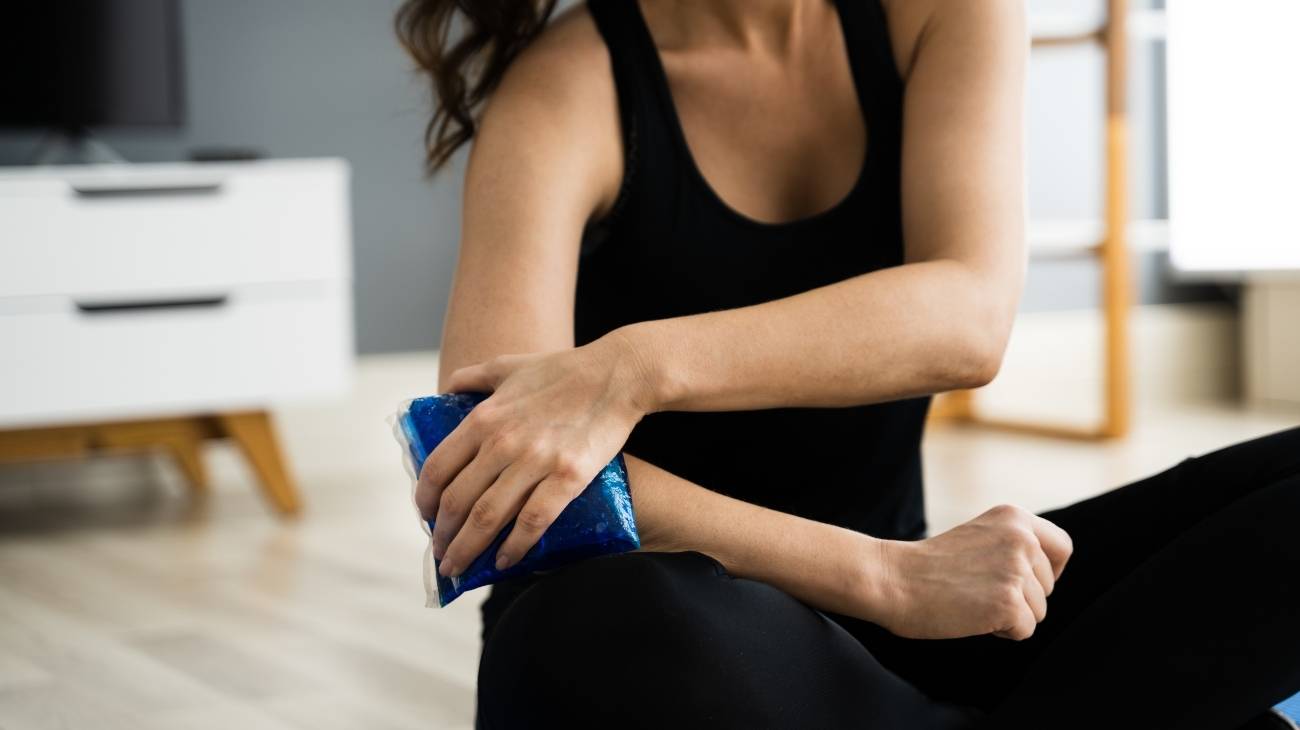In the birth process, perineal tears are usually generated, causing pain and difficulty for the mother to walk during the postpartum period. This type of ailment is also experienced in lactation with breast engorgement.
In all these cases it is very appropriate to use heat and cold gel packs to relieve pain in labour, postpartum and breastfeeding. If you want to know what the most common symptoms and pains are and how to combat them with this type of therapy, take a look at what follows.
What are the most common pains and symptoms in postpartum and breastfeeding?
During postpartum and breastfeeding, a woman experiences exhaustion, pain and a whirlwind of emotions. All these physical and emotional sensations are caused by the perineal trauma suffered in childbirth and the physical changes generated after it.
Below, we would like to talk to you about the most common symptoms that occur during childbirth and breastfeeding:
Most common postpartum symptoms
Postpartum, or also called "perineal trauma," is damage to the genital area between the vagina and the anus that occurs during childbirth. Regardless of whether it was a vaginal or cesarean delivery, stitch or not, the woman will experience pain and discomfort during the recovery process.
However, we must state that, in the case of a Caesarean section, recovery will be slower. Also, it should be considered that during the first days of the surgery the pain will become intense, progressively decreasing.
In the case of a normal birth, a cut of the perineum may have been generated so that the foetus has more space to be born. This procedure is also known as episiotomy, and in the postpartum recovery process the mother will experience pain and difficulty in walking.
In both cases, whether it is a vaginal delivery or a C-section, there will be a series of symptoms associated with this stage. Some of them:
- Mistakes: After the baby is born, the uterus continues to contract, especially during the breastfeeding process. However, this symptom will only last a few days.
- Chills and hot flushes: As the body adapts to the changes in hormones and blood flow, the internal thermostat may become unstable, causing chills and hot flushes.
- Constipation: After childbirth it may become difficult to urinate or pass urine because of the distension of the perineal muscles, especially in long vaginal deliveries. This is why, when faced with some effort, laughter or sneezing, there is pain and discomfort.
- Haemorrhoids: During the postpartum period, haemorrhoids or piles are not usually expected.
- Anaemia: This is generated by the loss of blood during the birth process.
- Loquios (vaginal discharge): Abundant vaginal discharge may be generated, sometimes with the presence of blood clots. After several weeks it will disappear, becoming lighter and lighter until it reaches a whitish or yellowish colour.
- Weight loss: Some women experience a weight loss of between 5 and 6 kilograms (12-13 pounds). This is due to the expulsion of the baby, the placenta and the amniotic fluid, but also the extra weight in water that drops during the first weeks when the body regains balance.
- Breast tenderness and pain: After delivery, your milk will start to rise in your breasts. Once they are congested, it will cause discomfort and pain in the nipples.
Most common symptoms in breastfeeding
After a woman gives birth, a drop in placental hormones occurs with an increase in prolactin. This action is generated to stop the milk secretion, however, in the process other symptoms are also generated:
- Congestion in the breasts: This can occur in 1 or 2 breasts, causing pain and swelling. This discomfort extends to the armpit area due to the swelling and sensitivity of the lymph nodes in this area.
- Hot or lumpy breasts: This is generated as a consequence of the whole physical hormonal process that takes place inside.
- Shiny appearance: You may notice that the breasts look stretched out and shiny, reaching an increase in sensitivity, especially in the area of the nipples which may be hard and flat.
- Breaking: As a result of breast engorgement, an increase in body temperature of between 37.5 and 38.3ºC may be generated.
- Pain when breastfeeding: During the first few days, feeding your baby could be very painful.
- Mastitis or blocked ducts: Many women stop breastfeeding so as not to experience acute pain, but this will only make the situation worse. Not emptying the breast can lead to blocked ducts or mastitis, and even a decrease in milk production.
- Other symptoms: Among other symptoms, the woman could experience general discomfort, chills, a decline in her mood, among others.
Bestseller
What are the advantages of applying cold to reduce pain in swollen breasts due to breastfeeding?
Applying cold is one of the most effective and recommended ways to reduce pain in swollen breasts due to periods of breastfeeding.
However, beyond reducing pain and inflammation during this stage, it also brings other benefits which we will talk about below:
- Reduces pain and inflammation: This is made possible by reduced blood flow, metabolic activity and numbness of the skin.
- Relief of discomfort: If the pain is recent, cold is the best way to combat discomfort generated during the nursing period, as it will progressively relieve the pain and inflammation.
- Promote milk flow: Cold promotes milk production, and the more milk that flows, the better it will match baby's demands, providing a sense of relief and comfort.
- Relieve breast pressure: As the feeling of relief increases, the mother will feel more confident about breastfeeding. Breast pressure is relieved by expressing milk.
- Your mood will improve: With the decrease in pain and swelling, the possibility of experiencing postpartum sadness generated by exhaustion, pain, discomfort and stress caused by the trauma decreases.
- Faster and more effective recovery: The greater the state of well-being due to the progressive decrease in pain and swelling, the recovery times for the postpartum period are accelerated.
- Decreases the possibility of generating mastitis or other pathologies associated with breastfeeding: With a balanced flow in the production and extraction of milk during breastfeeding, the possibility of generating mastitis or other diseases associated with breastfeeding is reduced.
- Reduced risk of sudden infant death syndrome: By reducing pain and inflammation, it will promote breastfeeding in women. In addition, it also favours the reduction of the risk of the baby suffering from gastrointestinal, urinary and respiratory diseases, obesity and future chronic diseases.
- Breastfeeding promotes bonding between mother and baby.
- Breastfeeding is very positive for uterine involution, decreasing postpartum haemorrhage, delaying ovulation, reducing the risk of pre-menopausal breast and ovarian cancer.
How to use cold gel packs to reduce swelling in swollen breasts due to breastfeeding?
Now that you're clear about the importance of treating cold gel packs during breastfeeding to combat breast pain and swelling, it's time to use them.
But first we will tell you how to make a correct use of these for a successful recovery:
- Freeze the gel packs in the freezer or refrigerator for a minimum of 2 hours.
- Then, you should take them out and touch them to make sure they are at the right temperature. In case it is too cold to touch, you can leave it outside the fridge until it reaches the right temperature.
- Apply a cold compress to your breasts for 10 minutes between feeds. Our compresses include a soft-touch cover, so you don't have to use towels or cloths to avoid direct contact with the skin.
- Monitor your breast area every five minutes while it's in contact with the cold to avoid burns or skin damage.
- Avoid letting the cold get directly to the nipple or areola, as this could cause an adverse effect caused by the lack of blood supply.
- You can apply cold whenever necessary. However, if the sensation of pain and swelling continues after 72 hours, it is recommended that you apply local heat before taking the shots.





































